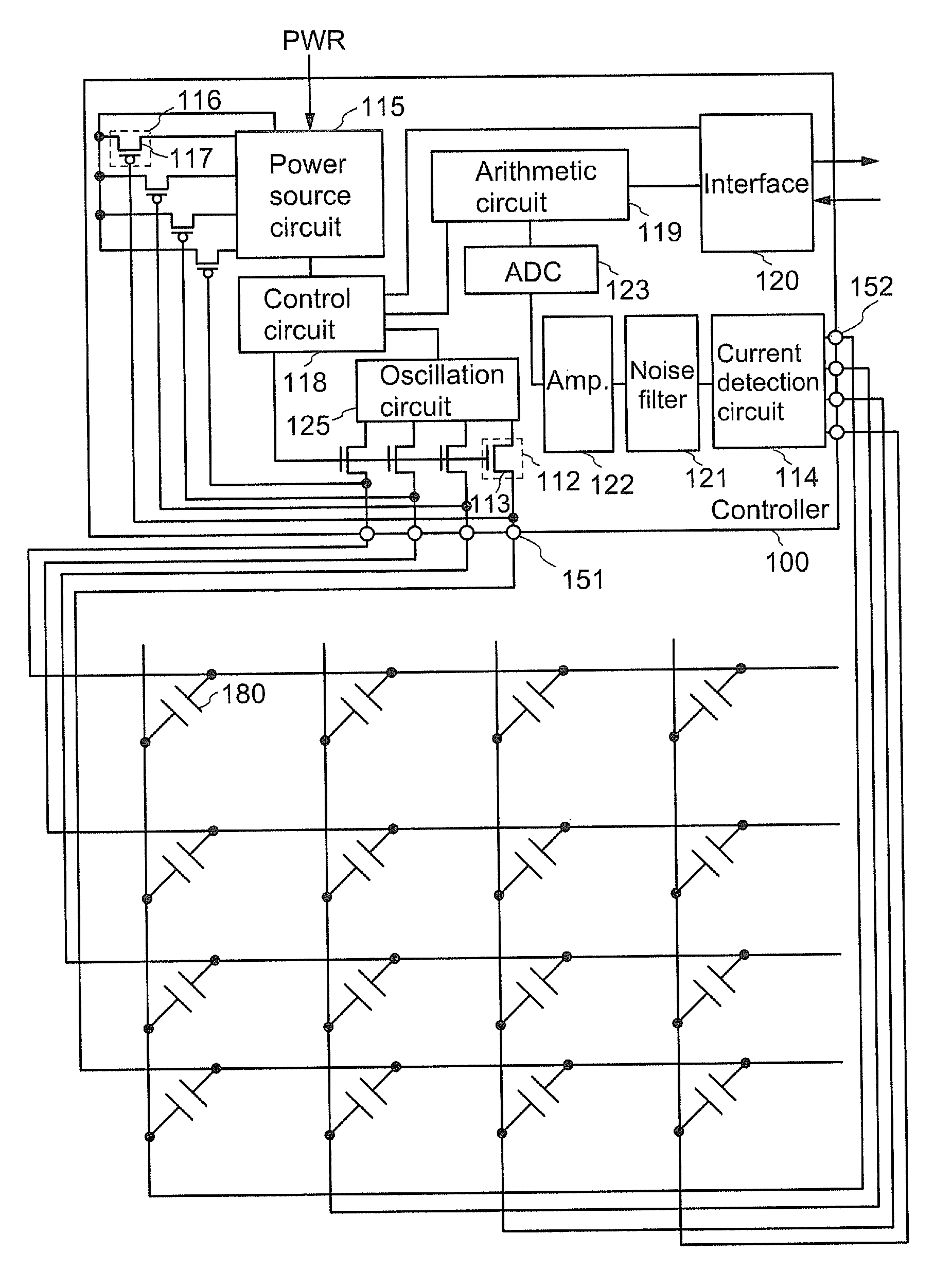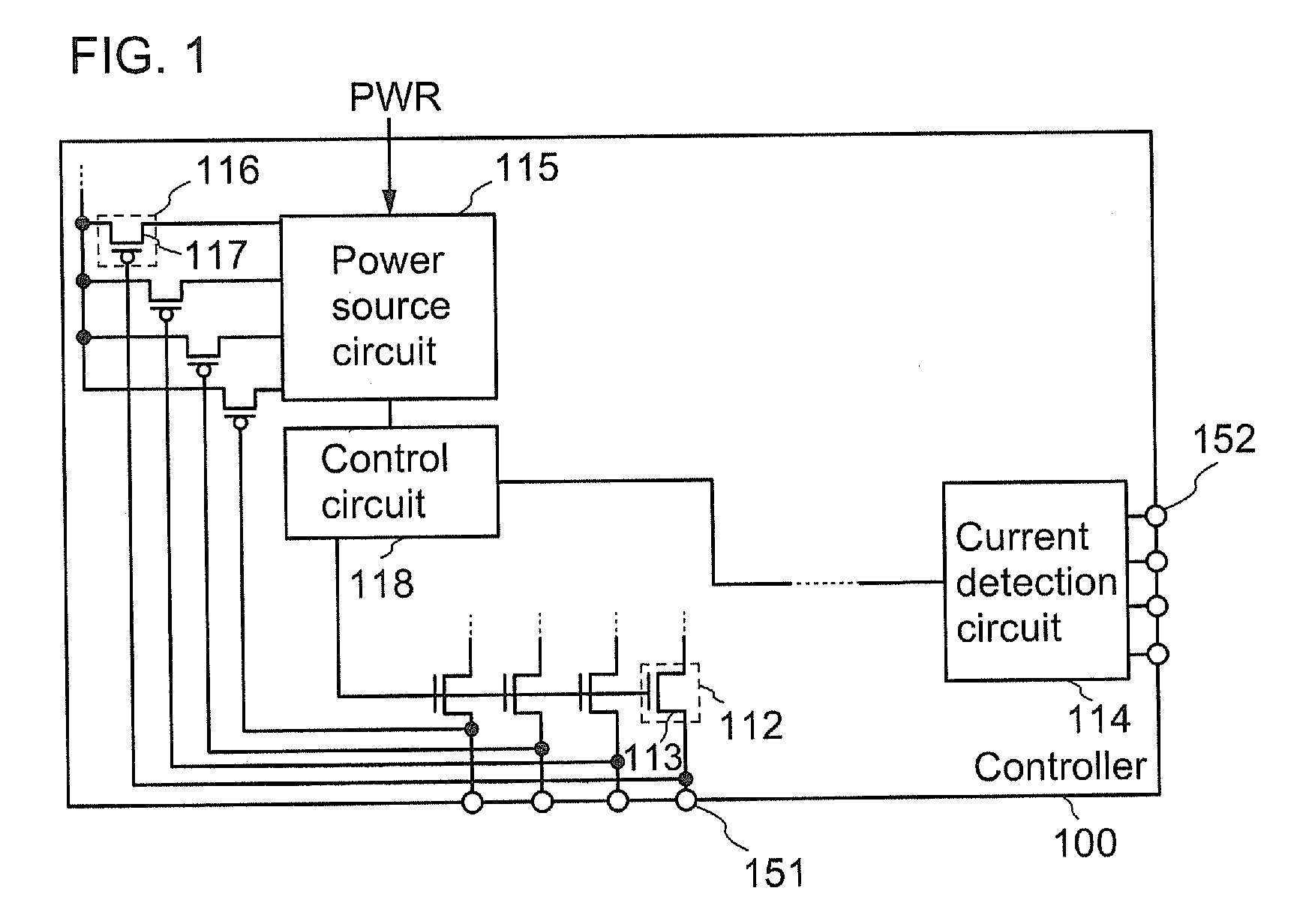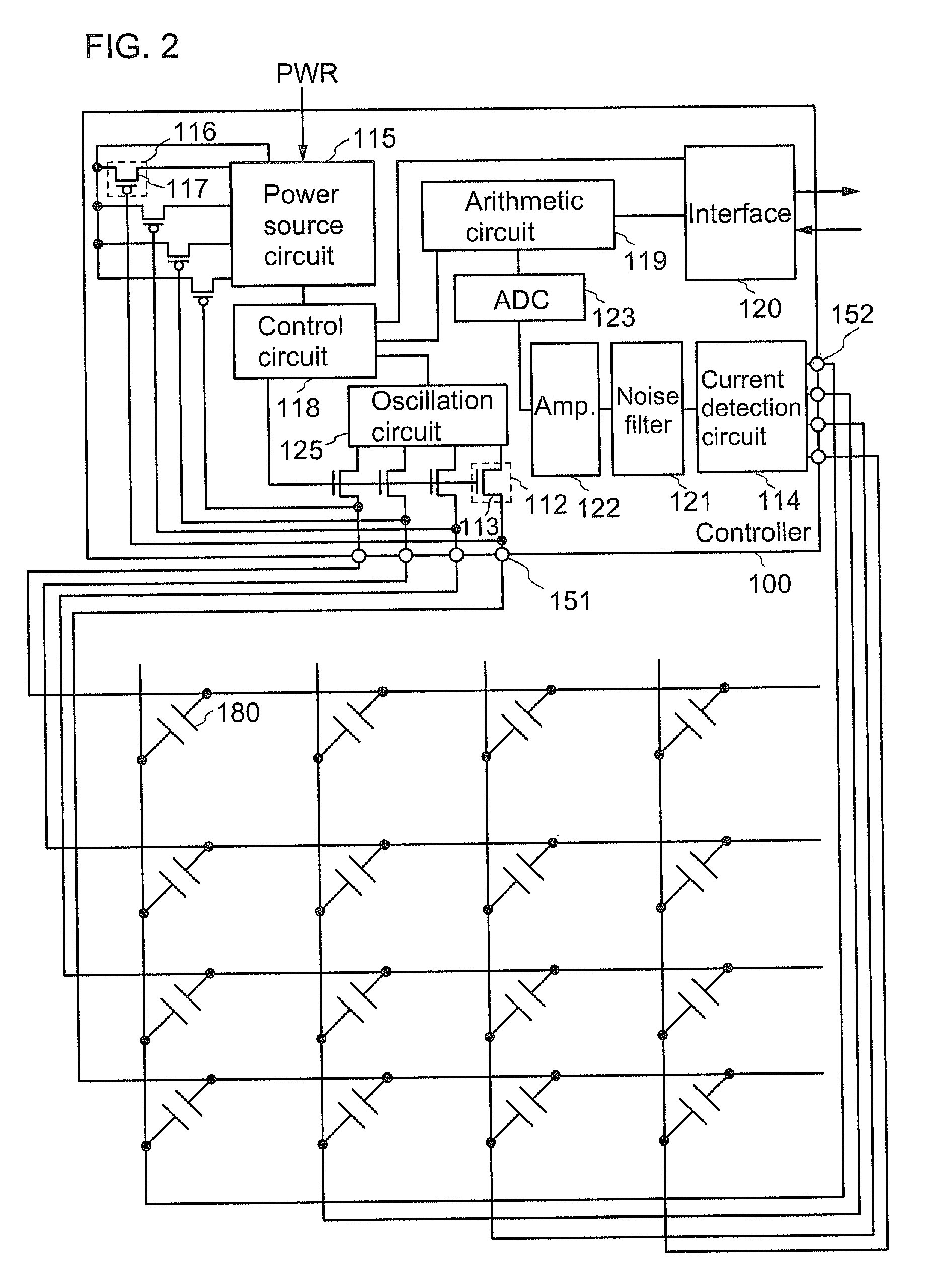Electronic device with controller and touch panel for rapid restoration from power-saving mode
a technology of power-saving mode and electronic device, which is applied in the field of controllers, can solve the problems of complicated operation at the time when the controller which can control the touch panel returns to the normal mode, and achieve the effect of simplifying the circui
- Summary
- Abstract
- Description
- Claims
- Application Information
AI Technical Summary
Benefits of technology
Problems solved by technology
Method used
Image
Examples
embodiment 1
[0030]In this embodiment, examples of a controller and a touch panel in the case of using a capacitive sensor are described.
[0031]First, an example of a controller is described with reference to FIG. 1. A controller 100 illustrated in FIG. 1 includes a control switch 112, a current detection circuit 114, a power source circuit 115, a power supply start switch 116, and a control circuit 118.
[0032]Further, an example of the controller 100 is described with reference to FIG. 2. FIG. 2 illustrates an example of a touch panel.
[0033]The control switch 112 includes a control transistor 113. The control switch 112 has a function of controlling supply of a potential to each one electrode of pairs of electrodes in capacitive sensors 180 in accordance with a gate potential of the control transistor 113. An output of a signal to each one electrode in the capacitive sensors 180 is controlled by turning on or off the control transistor 113. The number of the control transistors 113 may be plural ...
embodiment 2
[0073]In this embodiment, structure examples of a controller and a touch panel are described.
[0074]A touch panel of this embodiment includes a controller 401 and a sensor panel 402 as illustrated in FIG. 9A.
[0075]As the controller 401, the controller 100 described in Embodiment 1 can be used.
[0076]The sensor panel 402 includes a plurality of electrodes 411 which are provided in a row direction and a plurality of electrodes 412 which are provided in a column direction. One of the plurality of electrodes 411 intersects with the plurality of electrodes 412 with an insulating layer interposed therebetween. The electrodes 411 each have a plurality of rectangular regions in a row direction, and the electrodes 412 each have a plurality of rectangular regions in a column direction. A region between each two rectangular regions of the plurality of rectangular regions in the electrode 411 overlaps with a region between each two rectangular regions of the plurality of rectangular regions in th...
embodiment 3
[0109]In this embodiment, examples of electronic devices each including a display panel using a touch panel which is one embodiment of the present invention are described with reference to FIGS. 11A to 11D.
[0110]An electronic device in FIG. 11A is an example of a portable information terminal.
[0111]The electronic device illustrated in FIG. 11A has a housing 1011 and a panel 1012, a button 1013, and a speaker 1014 which are provided for the housing 1011.
[0112]The housing 1011 may be provided with a connection terminal for connecting the electronic device to an external device and a button for operating the electronic device.
[0113]The panel 1012 is a display panel (display).
[0114]The panel 1012 may be a touch panel which is one embodiment of the present invention. Thus, touch detection can be performed on the display panel.
[0115]The button 1013 is provided for the housing 1011. When the button 1013 is a power button, for example, pressing the button 1013 can turn on or off the electro...
PUM
 Login to View More
Login to View More Abstract
Description
Claims
Application Information
 Login to View More
Login to View More - R&D
- Intellectual Property
- Life Sciences
- Materials
- Tech Scout
- Unparalleled Data Quality
- Higher Quality Content
- 60% Fewer Hallucinations
Browse by: Latest US Patents, China's latest patents, Technical Efficacy Thesaurus, Application Domain, Technology Topic, Popular Technical Reports.
© 2025 PatSnap. All rights reserved.Legal|Privacy policy|Modern Slavery Act Transparency Statement|Sitemap|About US| Contact US: help@patsnap.com



